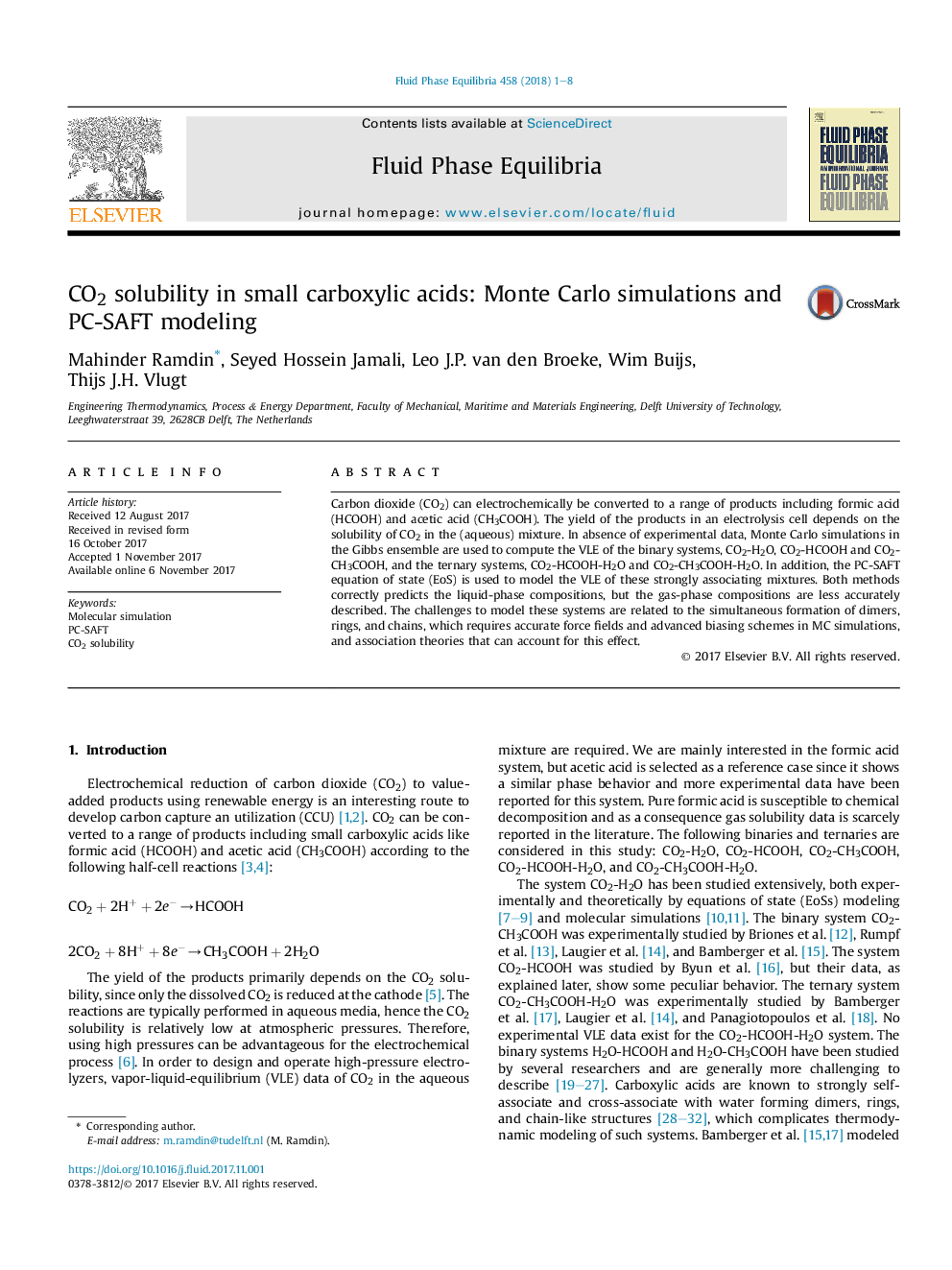| Article ID | Journal | Published Year | Pages | File Type |
|---|---|---|---|---|
| 6619349 | Fluid Phase Equilibria | 2018 | 8 Pages |
Abstract
Carbon dioxide (CO2) can electrochemically be converted to a range of products including formic acid (HCOOH) and acetic acid (CH3COOH). The yield of the products in an electrolysis cell depends on the solubility of CO2 in the (aqueous) mixture. In absence of experimental data, Monte Carlo simulations in the Gibbs ensemble are used to compute the VLE of the binary systems, CO2-H2O, CO2-HCOOH and CO2-CH3COOH, and the ternary systems, CO2-HCOOH-H2O and CO2-CH3COOH-H2O. In addition, the PC-SAFT equation of state (EoS) is used to model the VLE of these strongly associating mixtures. Both methods correctly predicts the liquid-phase compositions, but the gas-phase compositions are less accurately described. The challenges to model these systems are related to the simultaneous formation of dimers, rings, and chains, which requires accurate force fields and advanced biasing schemes in MC simulations, and association theories that can account for this effect.
Related Topics
Physical Sciences and Engineering
Chemical Engineering
Chemical Engineering (General)
Authors
Mahinder Ramdin, Seyed Hossein Jamali, Leo J.P. van den Broeke, Wim Buijs, Thijs J.H. Vlugt,
